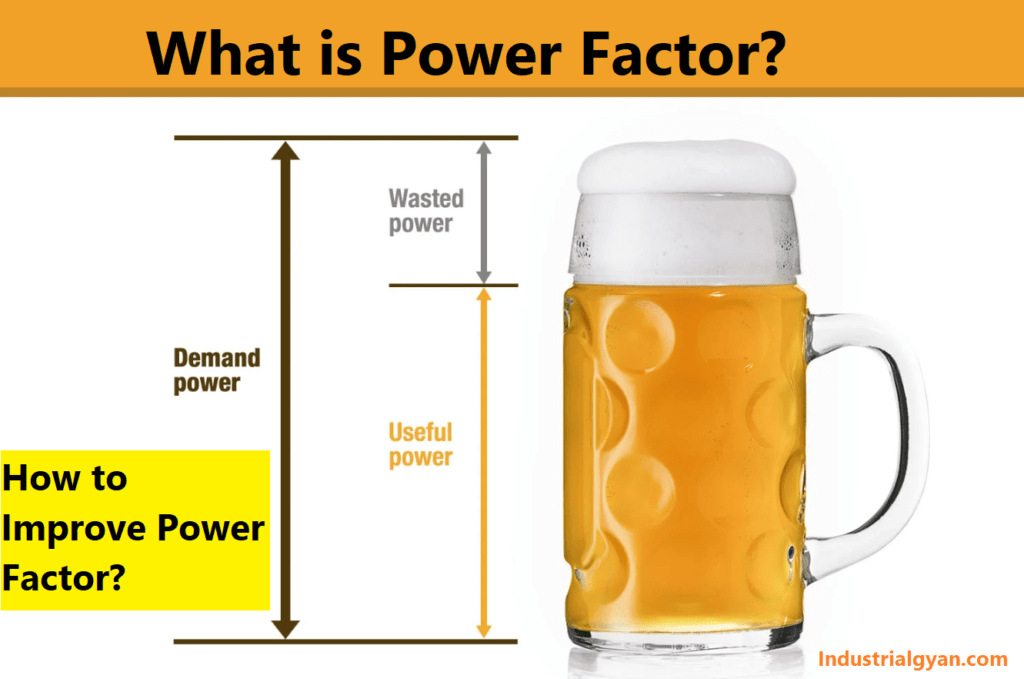1. Introduction
In the quest for a sustainable future, optimizing energy efficiency is of paramount importance. Power factor improvement plays a crucial role in this endeavor. By enhancing power factor, we can minimize energy wastage, reduce electricity bills, and promote a greener environment. In this article, we will delve into the concept of power factor, explore its significance, discuss common issues, and discover effective methods to improve power factor in various settings.
2. Understanding the Power Factor

Power factor refers to the ratio of real power (useful power) to apparent power (total power consumed). It measures how effectively electrical power is utilized. A power factor of 1 indicates efficient utilization, while values below 1 indicate energy wastage.
3. Importance of Power Factor Improvement
Improving power factor offers several compelling advantages. Firstly, it reduces the strain on electrical systems, enhancing their longevity and reliability. Secondly, it minimizes energy losses, resulting in reduced electricity bills for consumers. Lastly, it enables power systems to accommodate additional loads, promoting scalability and flexibility.
4. Common Power Factor Issues
Various factors can lead to poor power factor. Inductive loads, such as electric motors, transformers, and fluorescent lighting, are known culprits. High levels of reactive power can lead to voltage drops, increased current, and decreased overall system efficiency. Power factor issues are particularly prevalent in industrial and commercial settings.
5. Benefits of Power Factor Improvement
Power factor improvement offers numerous benefits across different sectors. In industrial environments, it reduces energy costs, enhances equipment performance, and improves power quality. In residential buildings, it leads to lower electricity bills, reduces electrical system stress, and enables more efficient use of electrical appliances.
6. Methods to Improve Power Factor
Several techniques can be employed to improve power factor. These include the use of capacitors, power factor correction devices, and load balancing. Each method has its own advantages and considerations, depending on the specific requirements of the system.
7. Capacitor Banks: An Effective Solution
Capacitor banks are widely used to improve power factor. They provide reactive power compensation, offsetting the inductive loads and improving overall power factor. Capacitor banks are available in various configurations, such as fixed or automatic, and can be tailored to meet specific power factor improvement needs.
8. Power Factor Correction Devices
Power factor correction devices offer an alternative solution for power factor improvement. These devices actively monitor and regulate power factor, ensuring it remains within desired limits. They are commonly employed in industrial and commercial settings where power factor fluctuations are more frequent.
9. Power Factor Improvement in Industrial Settings
Industries with high levels of inductive loads face significant power factor challenges. Implementing power factor correction measures can result in substantial energy savings, reduced penalties for low power factor, and improved overall operational efficiency. It is crucial for industrial facilities to prioritize power factor improvement for sustainable growth.
10. Power Factor Improvement in Residential Buildings
Power factor improvement is not limited to industrial or commercial applications. Residential buildings can also benefit from power factor optimization. By minimizing reactive power losses, homeowners can reduce electricity bills, extend the lifespan of electrical equipment, and contribute to a greener environment.
11. Challenges and Considerations
While power factor improvement offers numerous advantages, there are certain challenges to overcome. These include selecting the right power factor correction equipment, analyzing specific system requirements, and ensuring compatibility with existing infrastructure. Additionally, regular monitoring and maintenance are essential to sustain optimal power factor levels.
12. Future of Power Factor Improvement
As the world strives for greater energy efficiency, power factor improvement will continue to gain importance. Advancements in technology and increasing awareness of environmental concerns will drive the adoption of smarter power factor correction solutions. The future holds potential for intelligent systems that autonomously manage power factor and adapt to dynamic load conditions.
13. Conclusion
Power factor improvement is a vital aspect of optimizing energy efficiency. By enhancing power factor, we can minimize energy wastage, reduce costs, and create a more sustainable future. Whether in industrial or residential settings, implementing power factor correction measures brings numerous benefits. As we embrace the challenges and opportunities of power factor improvement, we move closer to a greener and more energy-efficient world.
14. FAQs
Q1: How can power factor improvement reduce electricity bills? A1: Power factor improvement reduces the reactive power component, which results in lower energy losses and subsequently reduces electricity bills.
Q2: Can power factor correction devices be retrofitted into existing electrical systems? A2: Yes, power factor correction devices can be retrofitted into existing electrical systems, providing an effective solution for improving power factor.
Q3: Are there any government incentives for PF improvement? A3: Depending on the region, some governments offer incentives or rebates to encourage power factor improvement initiatives, as it contributes to overall energy efficiency.
Q4: What are the potential risks associated with poor power factor? A4: Poor power factor can lead to increased energy consumption, higher electricity bills, voltage drops, equipment overheating, and reduced overall system efficiency.
Q5: How frequently should power factor be monitored and corrected? A5: Power factor should be regularly monitored, and corrective measures should be taken whenever necessary to maintain optimal power factor levels and maximize energy efficiency.
You can follow us on LinkedIn

I am an electrical & automation engineer with extensive experience in Design, PLC programming, SCADA development, and IoT integration. I have a strong background in the industry, focusing on the Design & Development of Hardware, Software &Industry 4.0 technologies, and the integration of intelligent manufacturing systems.
I have a deep understanding of electrical principles and am proficient in various programming languages, including Ladder Logic, Structured Text, and Python. In addition, I have experience with various PLC, SCADA & IoT technologies and a track record of successful integration projects for various clients.

